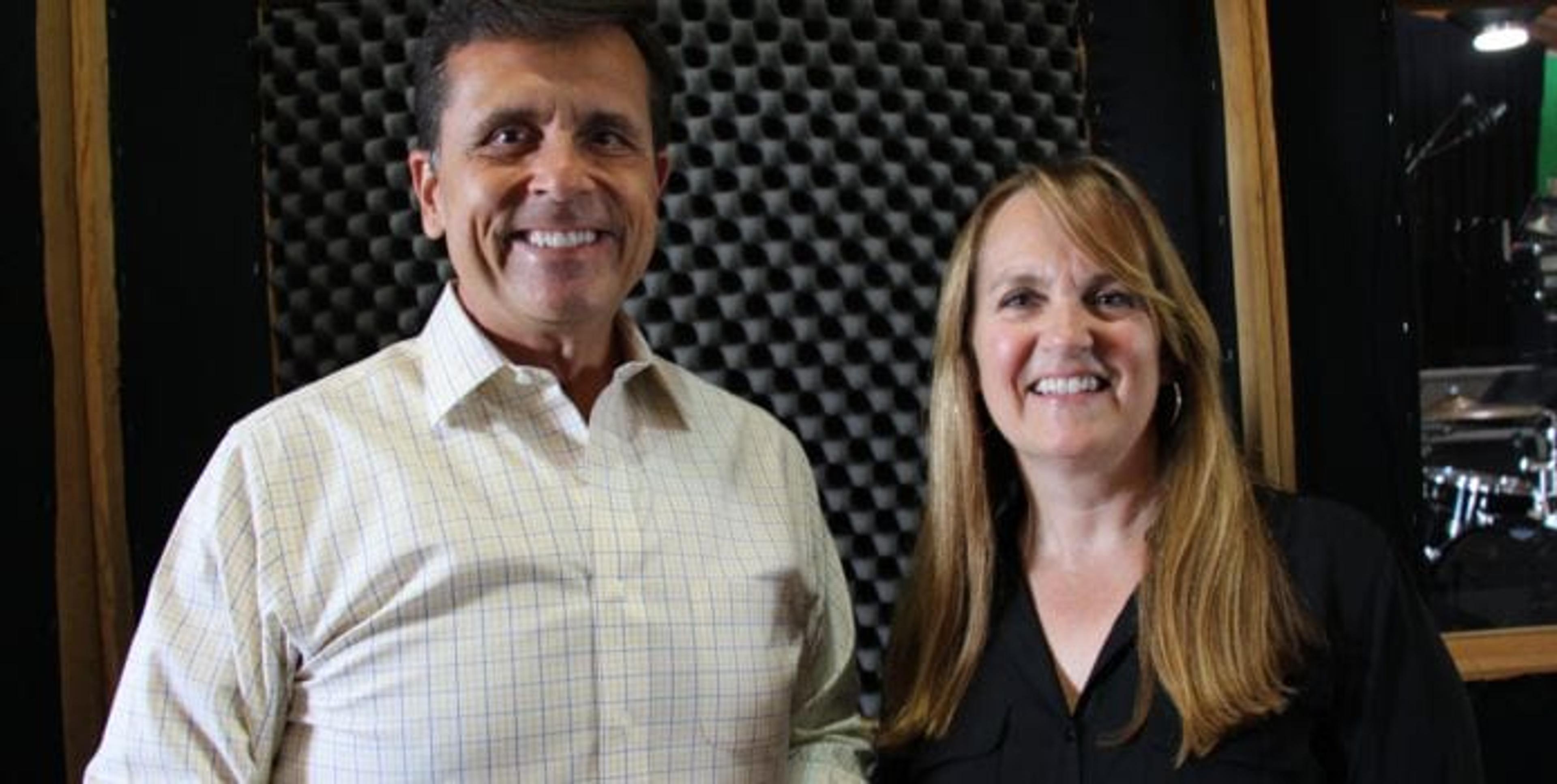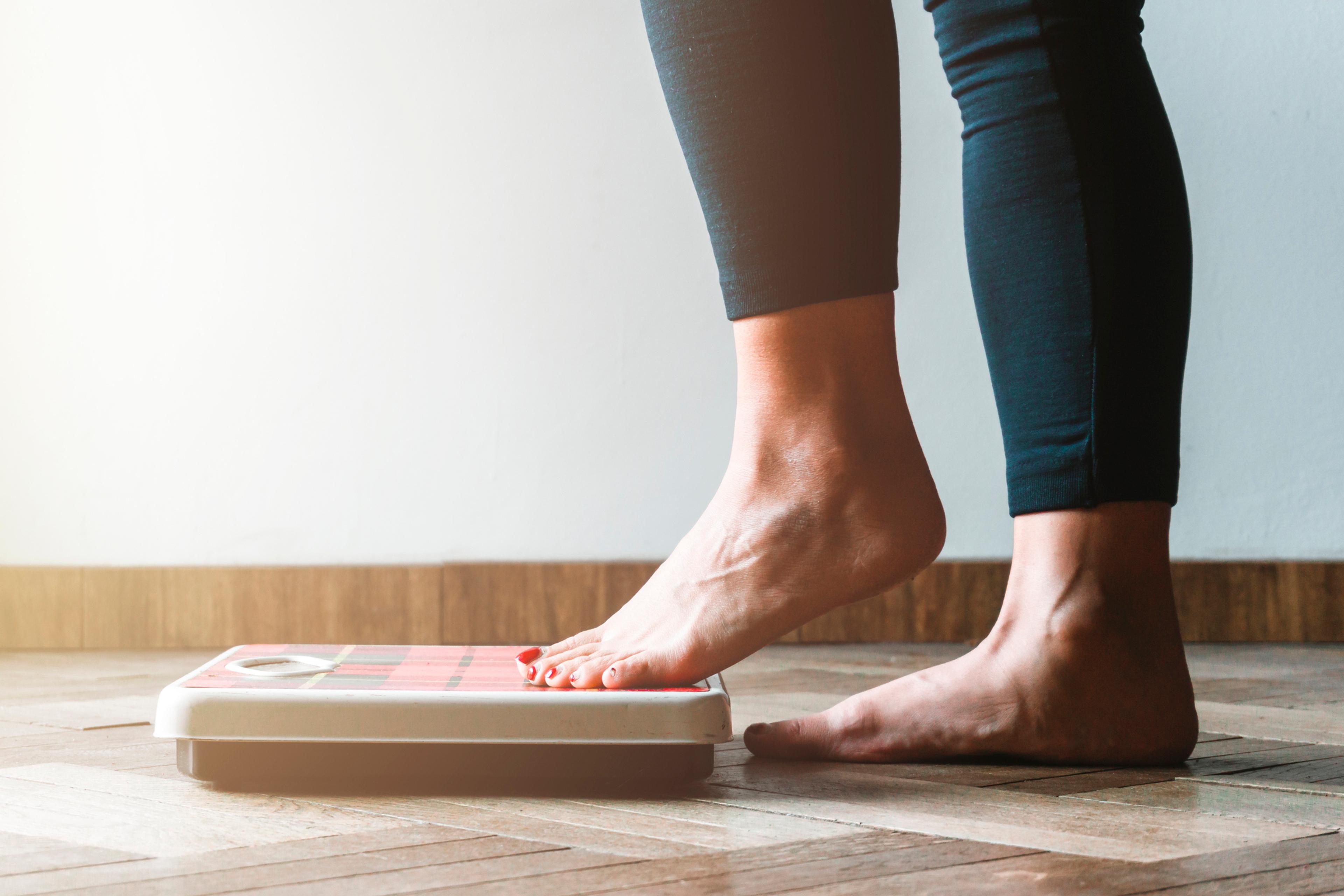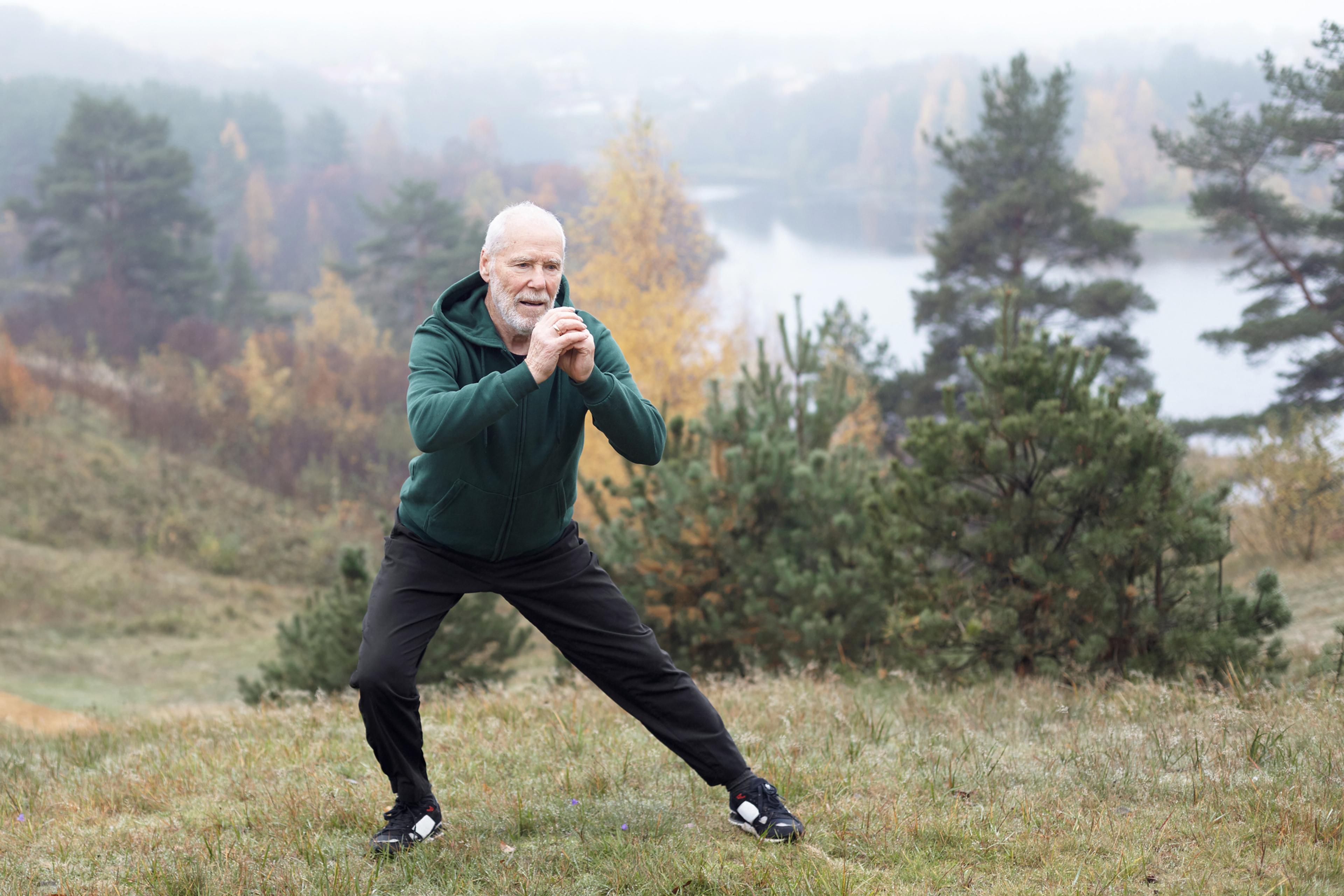Chuck: This is A Healthier Michigan Podcast, episode seven. Coming up, we discuss dimensions of wellness and what is well-being.
Chuck: Welcome to A Healthier Michigan Podcast. This is the podcast dedicated to navigating how we can all improve our health and well-being through small, healthy habits that we can start implementing right now. Maybe you’re out for a walk. You can do it right now. I’m your host, Chuck Gaidica. Good to be with you. Each week, we’re going to sit down with a certified health expert from Blue Cross, Blue Shield of Michigan. And we’ll dive off the deep end in a lot of questions about, “What is this idea of nutrition and well-being and when did we start talking about well-being and not wellness?” This also includes stress reduction, big thing to think about.
Chuck: In this episode, we’re talking about this whole idea of wellness. We’ve heard this in the workplace. We talk about it at home. We deal with it as we’re looking at different plans for insurance. But now we’re talking about well-being. It’s not just up to me. We had to bring in the experts. So we’re joined now for the next several episodes by Cindy Bjorkquist, who is an expert. She is also currently the director of health and wellness programs at Blue Cross Blue Shield of Michigan, the largest insurer in the state of Michigan, with over 4.5 million members. It’s good to see you.
Cindy: Good morning. How are you?
Chuck: Did you walk from East Lansing? Did you get your power walk to get here?
Cindy: I did.
Chuck: Yeah.
Cindy: I did a triathlon all the way here.
Chuck: You’ve got a pulled hamstring, though, right? Seriously.
Cindy: A torn hamstring, not even pulled.
Chuck: Torn? Oh my gosh.
Cindy: I know. I haven’t run since April first. Yeah.
Chuck: Well, you’re not wincing, which is really good.
Cindy: No, I’m not. I’m not.
Chuck: But you started out back in the day as an exercise physiologist.
Cindy: I did. I have a graduate degree in exercise physiology, and the application of that to programming for health is where I’m at, currently, in my career.
Chuck: Yeah. But can I say this? Decades of experience.
Cindy: Decades.
Chuck: That’s hard to believe. But I mean, 30 years plus of experience in this field of wellness. When did we start to go as a culture from saying, “wellness,” that’s not gone, but we’re hearing this phrase, “well-being” a lot more. How has that happened?
Cindy: Wellness has been around in the corporate setting for 35, 40 years.
Chuck: Yeah.
Cindy: And in that was fusion of some of these things that have gone what I say, mainstream, about well-being. But just in the last couple years, people have been tagging these programs as well-being. And what that means is, wellness programs were basically physical programs. You did a screening at the work site. And you had your blood pressure done, and your height and weight for BMI, and you had your glucose taken. It was a lot of these physical-
Chuck: Or you’re taking an aerobics class.
Cindy: Yeah, yeah. Exercise, nutrition, all that kind of stuff. Those were tagged as wellness programs. And about 80% of US employers offer wellness programs as of a couple of years ago, according to some research. Now, all these well-being tags are being put out there. And even at Blue Cross, we’re doing well-being programs. And what does that mean? According to the CDC, there’s no standard definition of well-being, but think of it this way. Well-being programs are the physical, the wellness programs like we just talked about, and that’s the application of other things that really help you improve your overall health: mindfulness, your relationships, your financial, how you interact with people in your life. Can you focus because you’re mindfully doing meditation? That kind of stuff.
Cindy: Gallup actually has their definition, what I actually think is a pretty good definition, which is, “Well-being is the combination of our love for what we do each day,” you have a sense of purpose when you get up. You might go to a job, or you might take care of the kids, or something like that, or your career, “and then the quality of your relationships.” Are you really honing in and being mindful of the relationships that you have in your life with your spouse or with your children or your elderly parents, or even your coworkers? It’s the security of your finances that’s added to that. That’s where it differs from wellness.
Cindy: Now, you have financial well-being out there. I can be better in my life overall if I understand what my debt is, if I understand I’m feeling non-stressed because I’m putting money away for my kids to go to college, or I’m meeting my budget, or I have a budget. It’s the sense of adding this financial wellness. And then the vibrancy of your physical health. It’s not only, is my cholesterol in the proper range, or my blood pressure in the proper range. But now I’m talking about emotional well-being. Do I feel a sense of purpose and a sense of focus every single day? That brings in a lot of different things that we’re gonna talk about in later podcasts, which is meditation and journaling, and identifying your sense of purpose, and stuff like that.
Cindy: These employers that are doing well-being, what they’re doing is they’re doing the consistent physical health, like you said, “Am I exercising? Am I running?” But now they’re doing mindfulness classes. Taking all the employees and putting them in a room and having an instructor walk them through meditation and mindfulness, understanding that if I do meditation and mindfulness training, that I can actually be more focused and more creative in work, but then also at home. I’m more focused on my kids when I go home. I’m not worrying about other things and clouding my mind.
Cindy: The other small thing that’s being added to these well-being programs, which I think is really fascinating, is the idea of happiness and gratitude. And we’re gonna dig into that in a later podcast, too. The idea that, if you’re not wired to be a happy person … You know how you have happy people in your life, that you’re around? And-
Chuck: I try to be one. I really do.
Cindy: Yeah. You are. When I met you, you’re happy and you’re smiley and you’re outgoing. So you gave me energy. If you’re around a really negative person, they tend to drag you down.
Chuck: Drag you right down.
Cindy: Yeah. Some of these well-being classes also have this sense of happiness, where you can change your default setting. You take a cranky person and have them journal-
Chuck: See, people don’t think that.
Cindy: I know.
Chuck: A lot of people don’t think they can re-wire their brain.
Cindy: You can.
Chuck: And neuroscientists are showing us all the time. You see these things come up in headlines, that there really is the ability to re-group here.
Cindy: Absolutely. Absolutely.
Chuck: Whether it’s journaling or … Okay. I want to go deeper in this.
Cindy: Yeah.
Chuck: I’ve seen, even though mindfulness is one of those words that’s a catchphrase now, we’re seeing that in places. I have literally seen … I have a doctor. This is what he does if I see him. He’s a good friend of mine as well. If I come in to get my blood pressure taken, number one, he doesn’t do it at the beginning of the visit, he does it later. He comes over, he closes the blinds, he turns off the lights. He kneels down next to the chair I’m in. He takes my elbow and he says, “I want you to go somewhere. Where are you going?” I said, “I’m going to a beach in Hawaii.” “Okay, are you there yet?” And he can tell. “No, you’re not there. You’re only in San Diego. Go farther.” And when he takes my blood pressure, I’m normally a average guy, 120 over 70. I’ve had the lowest 108 over 68, in his office. But what he does, and it dawned on me immediately, this is mindfulness. I am calming myself. I’m at peace. I didn’t just run up the stairs and go see the doctor and I’m scared or worried about something.
Cindy: Right.
Chuck: It’s amazing. And that’s just a little, tiny, anecdotal story.
Cindy: I love that.
Chuck: Isn’t that cool?
Cindy: I love that. He’s probably a patient-centered medical home physician with Blue Cross. But I love that.
Chuck: I don’t know. I’ll check.
Cindy: My doctor prescribes meditation.
Chuck: Is that right?
Cindy: Years ago, he prescribed … We had this conversation ’cause he knows what I do at Blue Cross. And he actually prescribes to his patients meditation, “You should start meditating.” How cool is that? Yeah.
Chuck: It is really cool. Let’s talk about this now. We’re going to places that you would think would not even be invited into work. But how many times do we individually bring something, I won’t call it baggage, it’s just a life event, right? It could be a divorce. It could be a great thing. It could be a moment where the kids graduate from college. You’re excited or you’re down. You can carry that into the workplace as well, can’t you?
Cindy: Absolutely. Absolutely. And that’s where these classes are doing, is they’re going beyond the old view that your physical health drives productivity and focus and you being the best person you can be. And it’s recognizing all these other areas. An easy way to remember this is that, in addition to the physical health … You still need to go to your doctor, like you said. You still need to get all those things done. But now they’re doing emotional health. What are your emotions? How can you change that? How can you do changing of your default in your brain?
Cindy: But also there’s this other application out there, under this big umbrella of well-being, which is called social wellness. And the fact that the people I hang around, like we alluded to earlier, and who I choose to be with in my life, and how I can affect them and how they can affect me, that is huge. That interconnection between people is folding under well-being.
Chuck: Yeah.
Cindy: And, also, this aspect that you have a network that you hang around. And that network can be influenced with good behavior or bad behavior. And this is something we’re gonna talk about later, too, on another podcast. But this whole idea of social network and the interaction between you and social wellness circles-
Chuck: How is that changing, though, with the social media? Because I just saw a study. It’s not just people who are aging. I deal a lot of people that are 50-plus. They said millennials, they are feeling lonely more than ever. Because we think we’ve got thousands of friends, and if something happened to my car right now, if I got a flat tire, I guarantee you, thousands of Facebook friends would not come pull up and help me change a tire. You know what I mean?
Cindy: I do.
Chuck: The circle seems big. But in today’s world, I think we’ve set ourselves up where we don’t have those kind of friendships for the social interaction. Am I wrong?
Cindy: No, there is. And actually, there’s some research that was just released a couple years ago on the number one factor for longevity. One of the number one factors is loneliness, exactly driving home your point. But well-being, what they do under the social circle and the social wellness is, that you need to take the relationships that are near and dear to your heart, that are influencing. Family and let’s say, close friends. Not maybe the thousand people you have on your Facebook. But your circle of close family and friends, and those are the people that you’re mindful with. So when you’re with your child, you actually are with your child. You don’t have … Like you said, you don’t have your phone in your hand, looking at Facebook, while you’re with your child. Or if you’re at …
Cindy: I have this story of … Both my boys played sports at East Lansing High School. I was sitting in the stands, back in my earlier career when I really wasn’t into diving into this mindfulness. And I was actually on my old … Remember the Blackberrys? I was on my old Blackberry. And it was a Saturday morning at a basketball game. And they were just warming up. But I was doing work on a Saturday morning on the sidelines. And I got hit in the head by the basketball. So it was this-
Chuck: Not on purpose. They didn’t whip it at you? Mom!
Cindy: No, no, no. They were practicing. My kids and I laugh about this. Because I was present. I was in the chair. Now, albeit, they were just warming up. They weren’t playing yet. But I was working on a Saturday morning on my Blackberry. I should have been staring at my child, in the moment, present, and focused. That’s a part of this, too, about relationships, is the relationships that you have in your life, you need to be there and be present and be mindful of what you’re doing.
Chuck: There’s a coffee house in Northville. I don’t own any of it, right? I mean, I have nothing to do with it. I’ve just gone there to get a latte. It’s called The Red Dot. I didn’t know what that meant until I went. And I looked around and I watched what they had printed on the wall. And I started to read their menu. You know what it means? It’s the dot that we see on maps that says, “You are here.” And the explanation is, when I come with Cindy Bjorkquist to get a coffee, put your phone down and just be here.
Cindy: I love that.
Chuck: You are here. Be here in the moment with your friend, with your family, with whoever you are in the moment with. I thought, “How brilliant is the name of this place, right?”
Cindy: That is so cool.
Chuck: That’s a shout-out to The Red Dot in Northville, Michigan.
Cindy: So cool. Along that same line, there’s this … Because you’re talking about your life being fulfilling and satisfying. There’s a great study that was done out there by O.C. Tanner in 2015. And they did this health and well-being study. And they were defining well-being. Because we’re all struggling, trying to define it.
Chuck: Yeah.
Cindy: But they talked about, again, reiterating that wellness programs focus on physical attributes, my outward dimensions of what my physical attributes are: my blood pressure, if I’m overweight, that kind of stuff. But when you transfer to well-being, they went a little bit farther than Gallup, and they said it’s a measure of a person’s perception of how their life is going. It’s how I think my life is going, my perception, whether it’s fulfilling and satisfied. You can be a completely, quote, in shape person, have all your biometrics completely within the normal ranges. But you may have the perception of an extremely unsatisfying and negative life. And that’s what well-being is, trying to take that person beyond just the physical to all these other things and dimensions that we talked about to help them understand and get to the point where their life is fulfilling and satisfying, and that they feel like they’re giving their best every day to themselves, which is really important, and to their family and their social circles with their friends. And it’s also the sense of, Tanner said, where my life is going and where I’m headed in the future, that I’ve got a plan and I’ve got that figured out to the point where it makes me non-stressed about that.
Chuck: But how many people do we know in our lives, and we’ve been there, ourselves, individually, depending on the season in life … How many of us don’t make a plan? It really is cool to have a road map. But I know we’re gonna talk about journaling down the road in another episode and maybe touch on it now. But this idea of getting to the point of having a plan, do we go to a trusted advisor? Do we go to a table of friends? Do we go to a coach, a counselor? When you’re looking at trying to get some of this back in order, who are we going to?
Cindy: Yeah.
Chuck: What’s your suggestion?
Cindy: Well, have you ever read The Blue Zone books?
Chuck: Yeah.
Cindy: Yeah. Dan Buettner talks about this. And he’s the coolest thing. I want to grow up in Okinawa, I think, because …
Chuck: Well, there’s a place in Italy. It would be a-
Cindy: Oh, really?
Chuck: Oh, yeah. Yeah. There’s a blue zone there, too. They’re like a 105 and eating goat cheese made from the goats right there on the hill.
Cindy: Do you know I eat goat cheese now every morning because of that study?
Chuck: Do you?
Cindy: Yeah, I do.
Chuck: Wow.
Cindy: I sprinkle it on my eggs. Anyway, he talks about, in Okinawa, these people grow up with a circle of five or six friends. He talked about this woman who every week, and she was like 102, every week for her entire life she weaved together with this circle of five friends and did exactly what you’re talking about. Talk about their life, talk about the things that impacted them, the things that made them happy, the things that stressed them out, it’s that network social support that they get. And that was one of the characteristics that he found throughout the world with those five zones that he talked about, where they had the oldest centenarians. You can get that through a best friend. They say there’s research that shows you’re healthier and you have a higher sense of well-being if you have a best friend at work. And that’s why all the surveys at work embed that, do you have a best friend at work. Do you have a confidante? Do you have friends that you can go to? That also, as this research is being pummeled up and put under that umbrella of well-being as well.
Chuck: Yeah. This idea of perception becoming reality, does that fall under emotional well-being? I mean, there are some people who walk around and they just have a cloud because they’re the most beautiful person inside and out ever and they just don’t think enough of themselves.
Cindy: Yeah. And that’s where some of the people are turning to meditation and mindfulness.
Chuck: Yeah.
Cindy: To change your default setting. And you mentioned journaling. Just really quick hit on the journaling. That kind of person may turn to journaling. And there’s a ton of journals out there. I started my journaling on a little piece of paper but went to an actual journal. And you identify in the morning what you want to do and what might change your life.
Chuck: Are you-
Cindy: I want to be happier. I journal every morning.
Chuck: Are you putting grateful things in there as well?
Cindy: Yes. Absolutely.
Chuck: This is what I’m grateful for.
Cindy: Grateful and gratitude goes along with all of this well-being. And there’s a ton of research on, if I’m at a higher sense of well-bring, I actually display gratitude more. So this idea, if you’re suffering, but you help somebody else, and it impacts you tremendously. There’s a … That, again, I have gratitude meditation classes going. Some of my staff are doing them at employers. Isn’t that cool? You sit in a room and you meditate and calm yourself down, calm your brain down. But then you actually display gratitude, think of a gratitude that you did yesterday and think about what you want to do tomorrow. That improves your sense of well-being.
Chuck: You talk about this, and I know we’re going to continue this conversation. We can go for hours.
Cindy: I know.
Chuck: But I just want to get to this idea of why we should focus on well-being, because you’re telling us so much great stuff. But why? What’s the payoff?
Cindy: The payoff is, if you transition from just being involved and worried and targeted and focused and set a goal on your physical, you may not broaden yourself to all the other topics that we talked about to improve your overall health. Health meaning your well-being health, not just your physical health. That will translate to you being at a higher sense of well-being, which means you’re going to be a happier person. A happier person is more productive in their life, both at work and at home.
Cindy: And it also helps you do what we’re calling in the industry, be resilient. If I’m my best that I can be ’cause I’m focusing on all these well-being things, I’m more resilient to my life and the challenges that hit me from the time my feet hit the floor in the morning, until I get into bed at night. And it’s a little bit different than what we used to talk in this field about stress management, identify your stressors. They found that, in neuroscience, if you identify your stressors and you write them down, your brain actually fires because you’re thinking of that stressful situation. This kind of stuff makes you focus on what makes you happy, what makes you mindful, what’s your sense of purpose. You’re more resilient to the traffic jam that you get into. Or somebody may have a conflict with you at work. You acknowledge it, ’cause you’re mindful. But then you can dismiss it and move on. It’s not letting your emotions overplay with yourself. Yeah. The challenges that hit you throughout the day, you are more resilient to them.
Chuck: And a lot of challenges come our way. And especially as we’re moving through life. Whether it’s kids on one side, we get sandwiched in with aging parents on the other side. And then you’ve got jobs and just your own perceptions. You’re so right. There’s so much going on.
Cindy: Absolutely.
Chuck: Well, we are going to continue to talk, because we’ve got more episodes to come. This idea of moving from wellness to well-being, we’re going to continue this conversation. We thank you for listening to A Healthier Michigan Podcast. It’s brought to you by Blue Cross Blue Shield of Michigan. If you like our show, you want to know more, check it out: ahealthiermichigan.org/podcast. You can leave us a review or rating on iTunes or Stitcher. And you can get all the new episodes on your smart phone or your tablet. Be sure to subscribe to us, too, on Apple Podcasts. You can go to Stitcher, or your favorite podcast app.
Chuck: Cindy Bjorkquist is going to be back with us in the next several episodes. We’ve got a lot to talk about. I want to jump off the deep end and hold my nose and just let you go, because there really is, there’s just so much great stuff here to make us feel better and just get up and walk around and be smiling all day. Join us next week. We’re going to talk about physical well-being. You heard a little bit about that, but we want to go back to it. We’re not done getting blood tests and trying to lose a few pounds and work it out, right? What’s the right way and why? What’s the point?
Chuck: Thanks for joining us. I’m Chuck Gaidica. We’ll see you next time.









